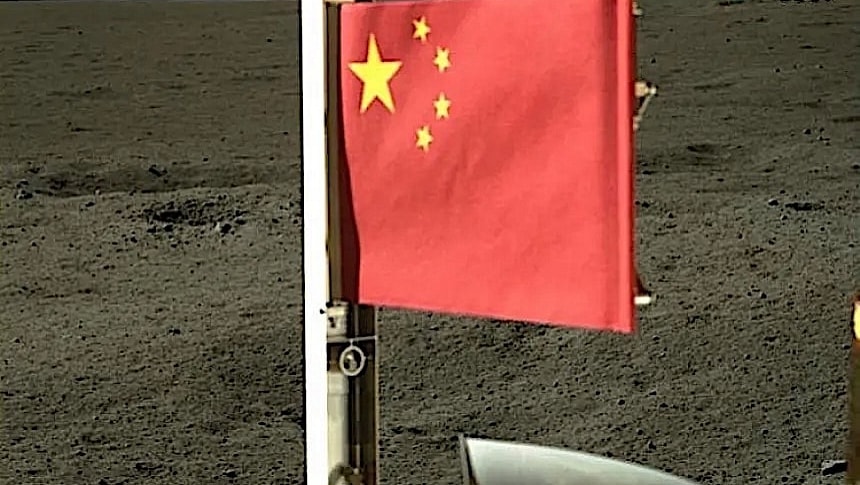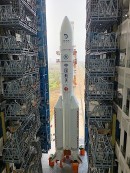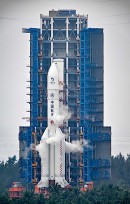On June 25, 2024, a Chinese spacecraft called Chang'e-6 delivered to Earth a capsule containing samples from the far side of the Moon. It marked the first time humanity got its hands on samples coming from the part of the Moon we never get to see from down here. And now we know exactly how much of the stuff we really have at our disposal.
Earth's natural satellite is tidally locked with our planet, meaning its rotational period matches its orbital period. In words we can all understand that means the place spins in such a way around its own axis and around our planet that it always presents the same side to an Earth observer.
The many missions to the Moon conducted so far have already revealed that the place's invisible side is pretty much just as dead as the visible one, and that there are no aliens hiding up there, robots or otherwise.
But the far side does come with its share of mysteries, the biggest of them being the fact that it is far more riddled with impact craters than the near side. It may very well be the perfect spot to look for clues into the conditions present in the solar system early in its existence, so snatching samples from there was deemed crucial.
As a species, we're used to getting bits of alien worlds down to the surface for closer study. We've already done that with the Moon during the Apollo program, and more recently we've gone out and pinched asteroids for bits of their flesh. But no attempt was made to do the same with the far side of the Moon, at least until China sent the Chang'e-6 up there.
The spacecraft departed our world on May 3, and reached the Moon on June 1. It sent a lander to the surface to snatch samples, which it then retrieved and brought back to China.
When it landed on June 25, the re-entry module was believed to have inside it about four pounds (1.8 kg) of lunar surface material, a sizeable quantity by all accounts. Now, the China National Space Administration (CNSA) announced the exact weight of the cargo: 4.26 pounds, or 1,935.30 grams of the stuff.
Chinese scientists will be the first to analyze the samples, with research likely to take years. Once they're done, they will share the samples with the international community for more insight into what really can be found up there.
China's successful mission of retrieving samples from the far side of the Moon is just the beginning of a space exploration program that should eventually see the Asian nation build a habitat on the surface of the satellite.
The Chang'e program, which debuted in 2007 and was named after the Chinese goddess of the Moon, has two more missions left, scheduled to depart in 2026 and 2028, respectively. The goal of the missions is to find usable resources and prepare the arrival of the first Chinese astronauts.
The many missions to the Moon conducted so far have already revealed that the place's invisible side is pretty much just as dead as the visible one, and that there are no aliens hiding up there, robots or otherwise.
But the far side does come with its share of mysteries, the biggest of them being the fact that it is far more riddled with impact craters than the near side. It may very well be the perfect spot to look for clues into the conditions present in the solar system early in its existence, so snatching samples from there was deemed crucial.
As a species, we're used to getting bits of alien worlds down to the surface for closer study. We've already done that with the Moon during the Apollo program, and more recently we've gone out and pinched asteroids for bits of their flesh. But no attempt was made to do the same with the far side of the Moon, at least until China sent the Chang'e-6 up there.
The spacecraft departed our world on May 3, and reached the Moon on June 1. It sent a lander to the surface to snatch samples, which it then retrieved and brought back to China.
When it landed on June 25, the re-entry module was believed to have inside it about four pounds (1.8 kg) of lunar surface material, a sizeable quantity by all accounts. Now, the China National Space Administration (CNSA) announced the exact weight of the cargo: 4.26 pounds, or 1,935.30 grams of the stuff.
Chinese scientists will be the first to analyze the samples, with research likely to take years. Once they're done, they will share the samples with the international community for more insight into what really can be found up there.
China's successful mission of retrieving samples from the far side of the Moon is just the beginning of a space exploration program that should eventually see the Asian nation build a habitat on the surface of the satellite.
The Chang'e program, which debuted in 2007 and was named after the Chinese goddess of the Moon, has two more missions left, scheduled to depart in 2026 and 2028, respectively. The goal of the missions is to find usable resources and prepare the arrival of the first Chinese astronauts.















